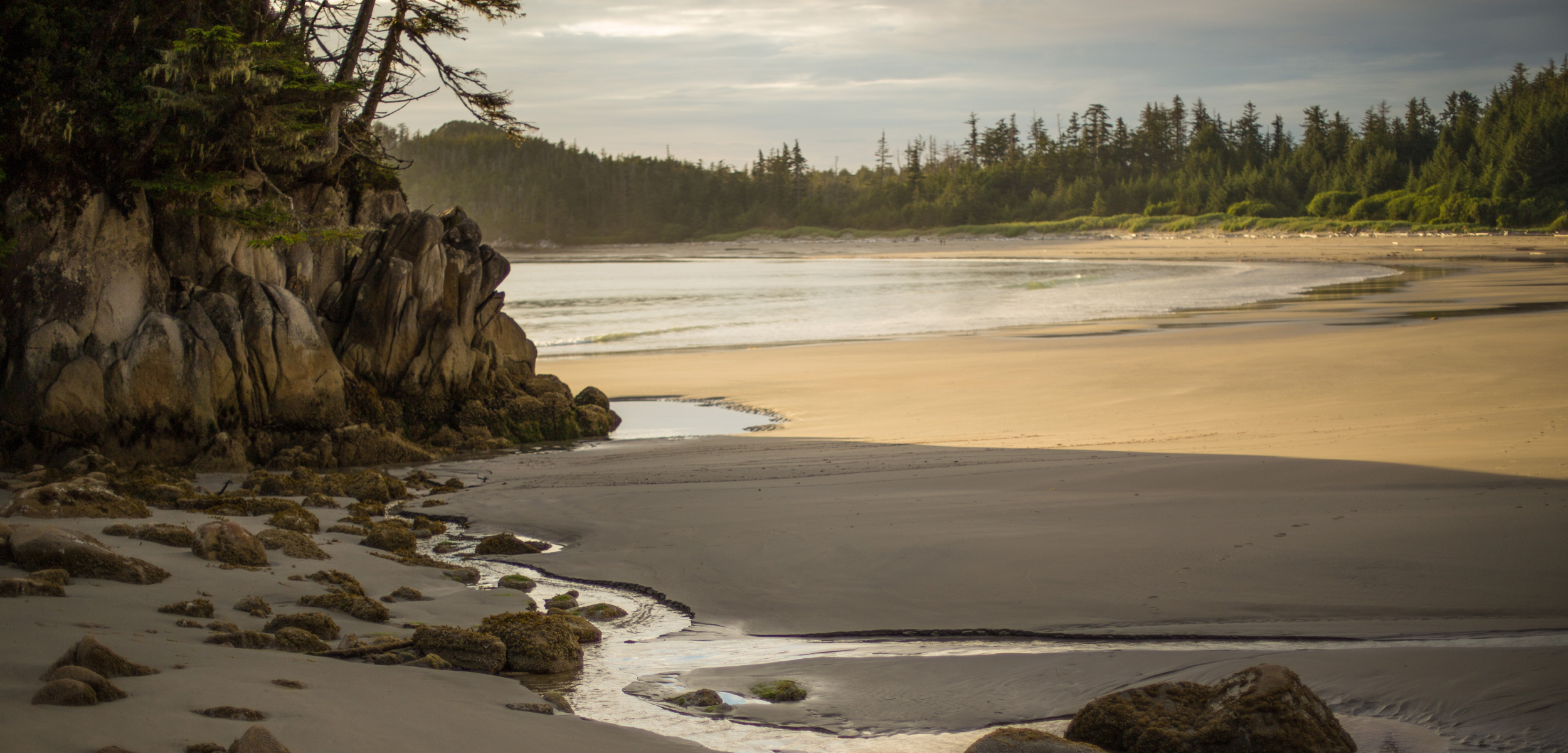A Beachcomber’s Grail
An afternoon beach hike turns up a prize from the Pacific.

Long before they set foot in the lodge, visitors to Hakai Institute’s Calvert Island Ecological Observatory have probably all been told about the legendary meals. The kitchen team rises at the crack of dawn every day to prepare sumptuous breakfasts and lunches for dozens of hungry researchers and support staff. They work incredibly hard to keep the place fueled. So kitchen staff understandably takes the afternoons off to unwind before dinner.
On one such afternoon, first cook Scott Hamel found himself on Little Wolf Beach, a 200-meter-long crescent of sand about a 45-minute hike from the main lodge. The beach faces a secluded cove, but the open Pacific Ocean crashes against the outer coast less than two kilometers away. And sometimes, the ocean brings in treasure.
Hamel was enjoying the day when a colorful glint caught his eye. “The sun was shining. I could see an emerald glow emitting from under a log,” he says.
What he found there was a beachcomber’s dream. Sitting in the sand beneath the log was a hollow glass sphere almost twice as large as a volleyball—a Japanese glass fishing float.
Glass fishing floats were first used in Norway in the 1840s. By the early 20th century, many countries, including Japan, were using glass floats, especially for deep-sea fishing. Old sake bottles were often used as a source of glass that was recycled into floats. Before the age of plastic, glass was a cheap and durable float material.
Hamel’s float was in remarkably good shape. “The ball was completely uncovered and clean other than a small amount of seaweed dried onto it,” he says.
As Hamel brushed the fine, white sand off the float, he noticed an insignia that resembled two Fs, one forward and one backward, as though the letter were mirrored. He posted a picture on Twitter where someone recognized the symbol as belonging to the Hokuyo Glass Company in Japan.
The Hokuyo Glass Company sits at the northern tip of the main island of Honshu in the Aomori Prefecture and has been around since 1949. The mirrored “F” symbol is a Japanese character that means “north.” The company still produces glassware, but hasn’t made fishing floats for some time. Hamel’s find may have been cruising the currents in the Pacific for years.

Glass floats are a favorite collector’s item for dedicated beachcombers who visit the outer BC coast. Few people find one, even on remote beaches like those on the Central Coast. In his years of working on Calvert Island, Hamel has only ever found one other glass float, a much smaller specimen he spotted after serendipitously slipping on a piece of driftwood.
His new, giant, glass float has become a prized part of his eleven-year-old son’s extensive collection of beach glass.
“It’s displayed in our front window where the sun hits it nicely in the afternoons,” he says.

